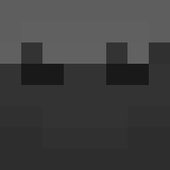-
Recently Browsing
- No registered users viewing this page.
-
Posts
-
By TileEntity · Posted
Delete the config of the mod cupboard (config folder) If there is no change, remove this mod -
I was trying to play with some mods and I ended up getting this crash report, It most likely has something to do with a mod going by my research but I still need some help. Not that good with stuff like this. Here is the crash report: https://pastebin.com/sX1gxnG9 Any help is appreciated!
-
@bluedisgusted That actually fully fixed it, thank you so much
-
By Bigfoot302 · Posted
Hi, I would like to know how to create multiple hitboxes for the player like the ender dragon. I've searched everywhere but I haven't found anything. -
By pamela k ingram22 · Posted
FOLKWIN EXPERT RECOVERY is the crypto hero we all need in the ongoing battle against cryptocurrency theft. With the rise in popularity of digital assets like Bitcoin and Ethereum, crypto crime has also been on the rise as hackers look to steal funds stored in virtual wallets. Many a crypto investor has fallen victim to clever scams and hacking schemes that drain wallets of their precious coins. But fear not, for FOLKWIN EXPERT RECOVERY has arrived as a beacon of hope for those who have had their hard-earned crypto stolen. This service is like a superhero for tracking down lost or stolen cryptocurrency, utilizing their advanced forensic technology and expertise to follow the blockchain paper trail and identify where your funds have gone. Their team of ethical hackers act like detectives, piecing together crypto transactions and unmasking the thieves behind complex cybercrimes. No case is too difficult for FOLKWIN EXPERT RECOVERY; they have recovered millions in stolen crypto assets from around the globe. Their mission is to reunite victims with their lost funds and bring criminals who prey on cryptocurrency investors to justice. With their help, those who have been robbed of their digital fortunes now have a crypto guardian to call upon in their time of need. FOLKWIN EXPERT RECOVERY gives victims the hope that all is not lost forever when crypto theft occurs.For support, Contact details is: TELEGRAM: @FOLKWIN_EXPERT_RECOVERY, EMAIL: FOLKWINEXPERTRECOVERY at TECH-CENTER dot COM, WEBSITE: WWW.FOLKWINEXPERTRECOVERY.COM . are the heroes we need in the ongoing battle to make cryptocurrency ownership safe and secure for all. Get FOLKWIN EXPERT RECOVERY on your side when you have issues like this by dialing: Do this and thank me later. God Blessings to all, I'm forever grateful oh God for the successful recovery. I recommend FOLKWIN EXPERT RECOVERY the best ever and i'm so happy i got all my lost money back. Best Regards. Pamela K Ingram.
-
-
Topics
-
Who's Online (See full list)





Recommended Posts
Join the conversation
You can post now and register later. If you have an account, sign in now to post with your account.
Note: Your post will require moderator approval before it will be visible.